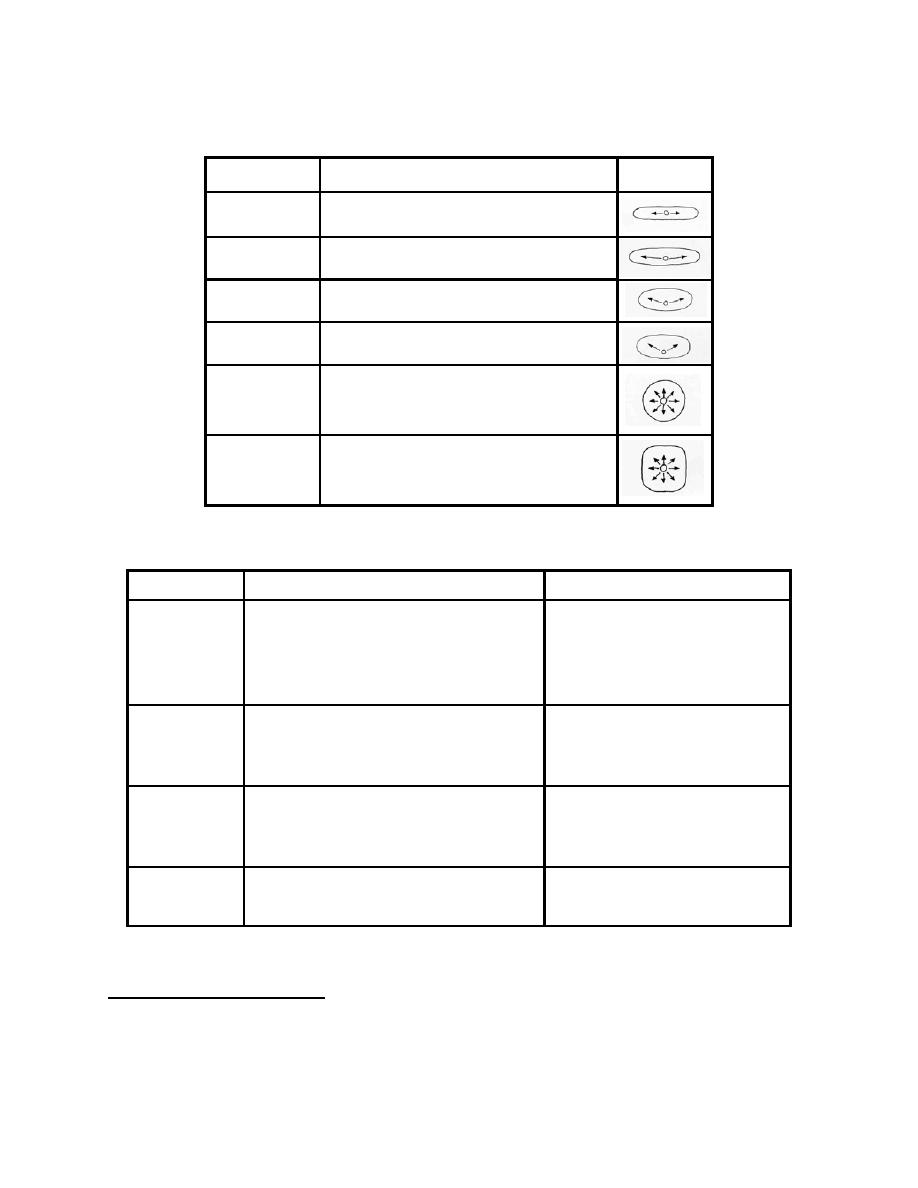
UFC 3-530-01
22 August 2006
Type
Description
Plan View
Narrow, symmetric illuminance pattern.
Type I
Slightly wider illuminance pattern than Type I.
Type II
Wide illuminance pattern.
Type III
Widest illuminance pattern.
Type IV
Symmetrical circular illuminance pattern.
Type V
Symmetrical, nearly square illuminance pattern.
Type VS
TYPE
DESCRIPTION
APPLICATIONS
A luminaire light distribution where zero candela
Use for roadway, parking, and other
Full Cutoff
intensity occurs at an angle of 90 above nadir and at
vehicular lighting applications. Minimizes
all greater angles from nadir. Additionally, the candela
glare and light pollution and light trespass.
per 1000 lumens does not numerically exceed 100
(10%) at a vertical angle of 80 above nadir. This
applies to all lateral angles around the luminaire.
A luminaire light distribution where the candela per
Use in applications where pedestrians are
Cutoff
1000 lamp lumens does not numerically exceed 25
present. Provides more vertical illuminance
(2.5%) at an angle of 90 above nadir, and 100 (10%)
than Full Cutoff luminaires.
at a vertical angle of 80 above nadir. This applies to
all lateral angles around the luminaire.
A luminaire light distribution where the candela per
Use in pedestrian areas. If using in
Semicutoff
1000 lamp lumens does not numerically exceed 50
residential areas, provide with houseside
(5%) at an angle of 90 above nadir, and 200 (20%) at
shields to minimize light trespass.
a vertical angle of 80 above nadir. This applies to all
lateral angles around the luminaire.
A luminaire light distribution where there is no candela
Use for decorative applications only. Lamp
Noncutoff
limitation in the zone above maximum candela.
brightness should be less than 4200 lumens.
3
"Luminaires", Lighting Handbook Reference and Application, Chapter 7, Ninth Edition (New York: The
Illuminating Engineering Society of North America, 2000), p. 7-8.
4
"Luminaires", Lighting Handbook Reference and Application, Chapter 7, Ninth Edition (New York: The
Illuminating Engineering Society of North America, 2000), p. 7-8.
5-6



 Previous Page
Previous Page
